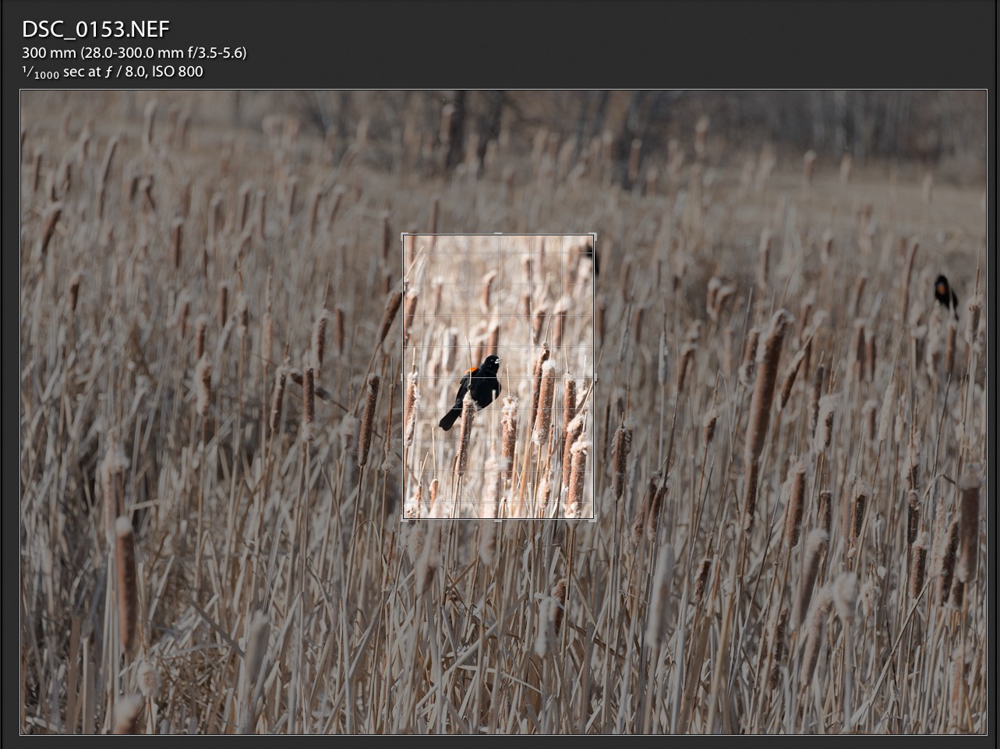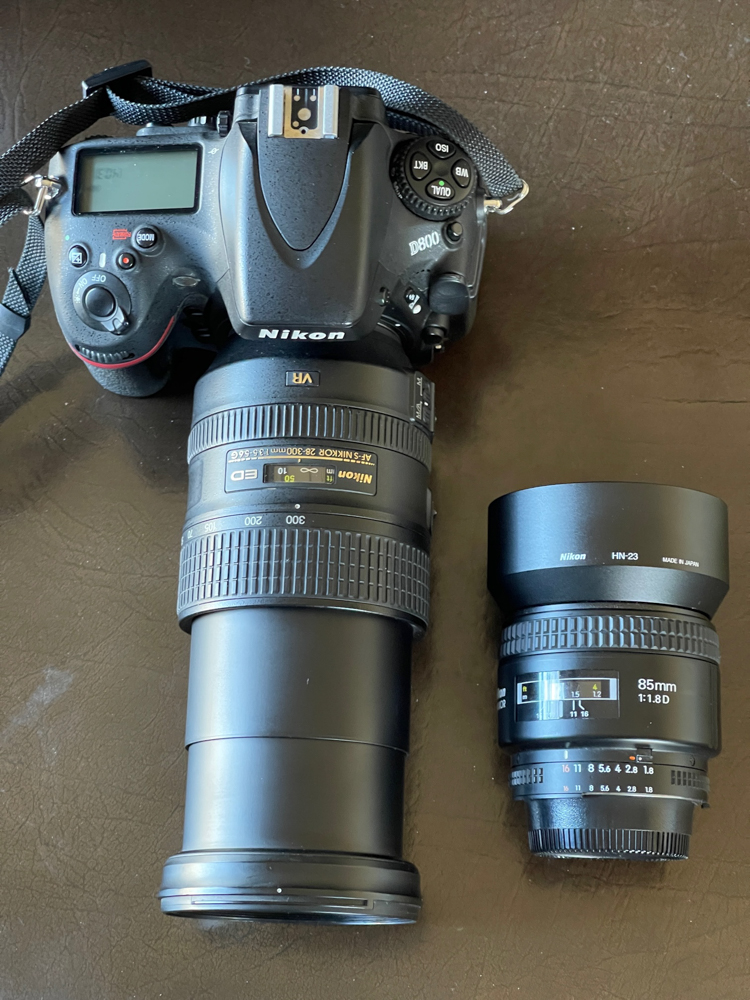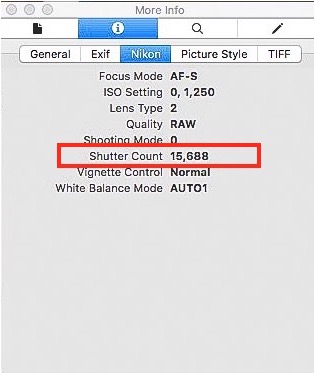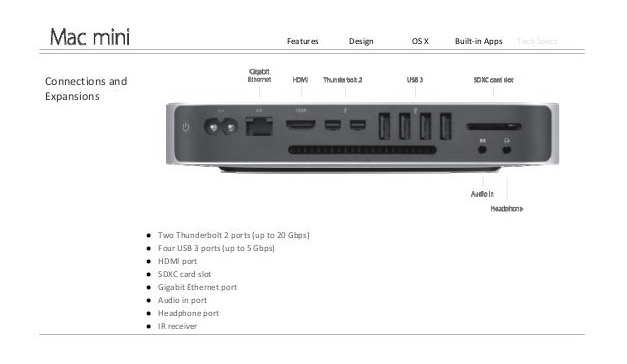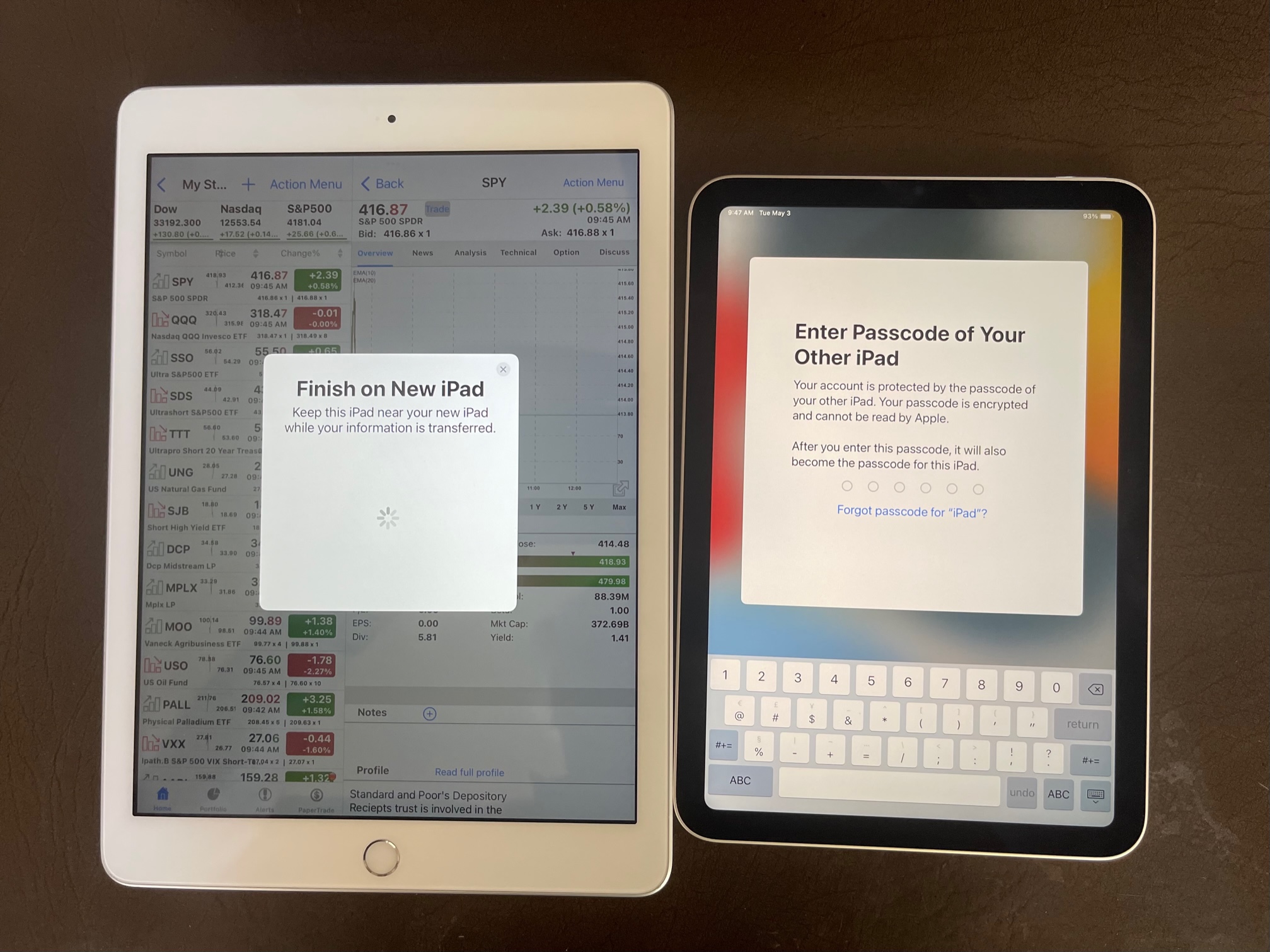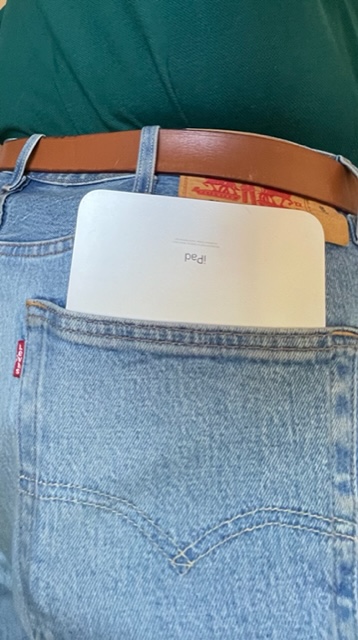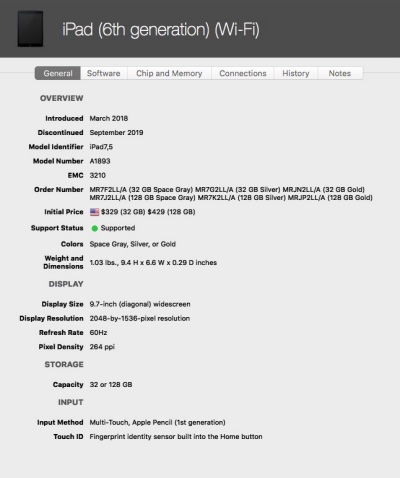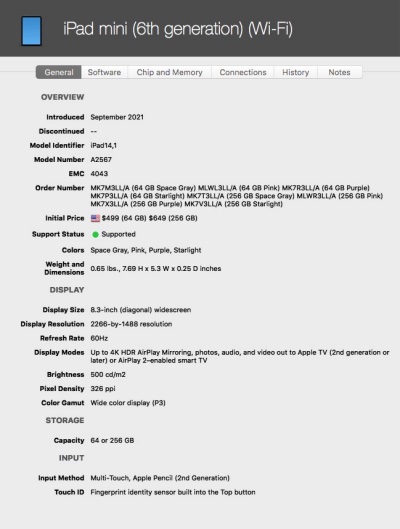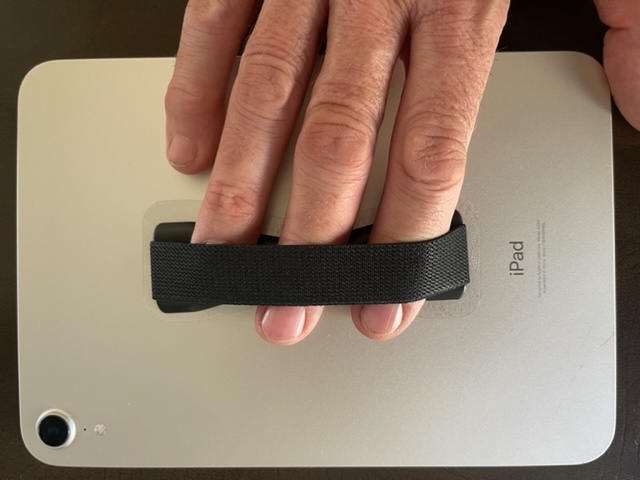Watch out!
A few years ago B&H, a reputable vendor of photo hardware, was forced to recall a batch of EN-EL15b Nikon batteries which turned out to be anything other than OEM (Original Equipment Manufacturer). In fact they did not even ask for their return. They sent new OEM ones to purchasers of the bad batch and asked that the originals be recycled. B&H had been scammed and acted honorably to fix their procurement mistake.
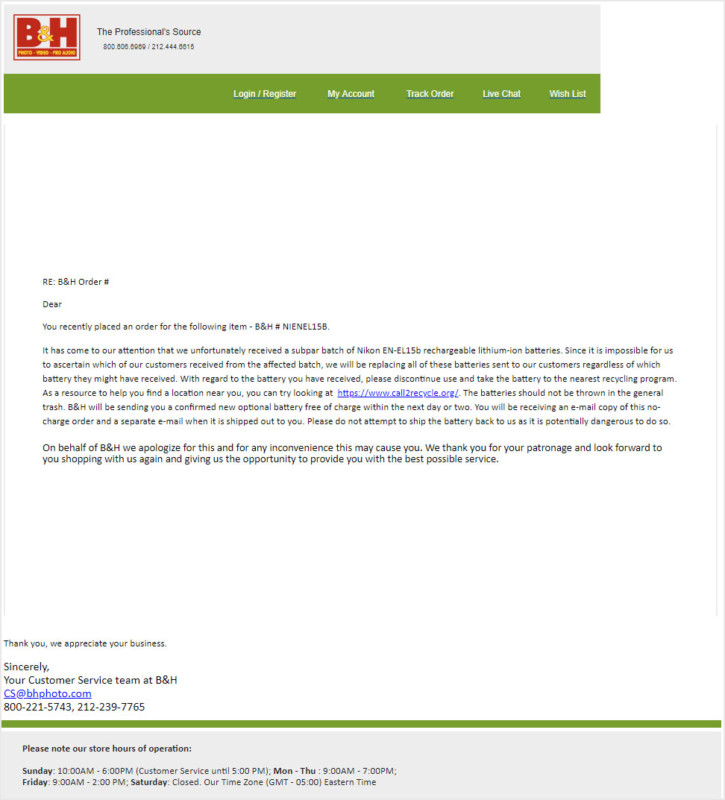
The B&H recall advisory.
Battery fraud is common and my research indicates that saving $30-40 on an aftermarket or eBay ‘Nikon’ battery is false economy.
The D800 and many other Nikon bodies take the EN-EL15, of which there have been 4 versions – EN-EL15, EN-EL15a, EN-EL15b, EN-EL15c.
The D800 came with the EN-EL15 but all later models fit. The ‘a’ and ‘b’ variants appear to be complying with new labeling requirements as the first three versions are all rated at 1900mAh. The ‘c’, which came with later mirrorless bodies, has increased the capacity to 2280 mAH, or 20% more shots, which is a lot.
My D800 came with two EN-EL15; the one would only charge to 40%, the other would charge to 100% but then lose 20% daily even without use, so I bought a new Nikon OEM EN-EL15c. Neither battery which came with the camera, when fully charged (solid LED on the charger), would reset the shot counter on the D800’s LCD.
Advice from Nikon and others as to compatibility is all over the place. I have found no issues charging or using the EN-EL15c in the D800 with the original charger MH-25.
Disadvantage of the OEM battery? It costs two or three times as much as the fakes.
Reckon on 2000-3000 snaps per charge (assuming no LCD chimping and no wi-fi use on bodies which have it). So I only need one good one. No way I take >2000 snaps in a session.
One excellent article on the subject is this one. The comments are particularly worth reading.
After reading that piece and others on the interwebs, I conclude there are eight indicators to look for in spotting fake Nikon camera batteries:
- The four notches on the long sides of the holographic gold label on the back. Real batteries have these. Fakes may not unless they are really good fakes.
- Weight. A real battery weighs 78-87 grams. Fakes may weigh less as there’s less power storage material inside. My new EN-EL15c came in at 80 grams.
- Tap for a hollow sound. Tap the rounded sides of the battery with a fingernail. A hollow sound indicates a fake. A solid one points to the real thing – or a really good fake. The hollow sound is the result of the internal void from lack of energy storage material.
- Failure to reset the shot counter to ‘0’ after a recharge. The shot counter in my D800 can be found on the LCD tool menu->Battery Info. An OEM battery resets this to zero after a full recharge. A fake one may not.
- Failure to reach full charge in the MH-25 (or MH-25A – identical) Nikon charger. My new EN-EL15c gets a solid ‘fully charged’ light in the OEM charger, from dead flat (as shipped), in 2 hours and 45 minutes. A fake or aftermarket one may not.
- Loss of charge, as indicated by the camera’s battery indicator, even after a period of non-use. This can indicate a fake or a really tired OEM battery.
- There is a small stamped lower case alphabetic letter between the ‘+’ sign near the connector and the connector. It’s ‘a’ for the EN-EL15a, ‘b’ for the EN-EL15b and ‘c’ for the EN-EL15c. It’s blank on the original EN-EL15 so this is not a foolproof indicator. To be safe if you battery is an ‘a’, ‘b’ or ‘c’ model and the stamped letter is missing, it’s probably a fake.
- Price. If it’s much under $70 and/or does not come in a Nikon box with circular holographic label, it’s probably a fake.
If any of the above symptoms is present, the chance are that your battery is a fake. (You need to check for all eight as each can be countered by a really good faker. It’s unlikely all eight will be). The first eight digits of the serial number on the battery are the manufacture date in the format yyymmdd. If the battery is much used and over 4 years old, even if OEM, it’s probably close to the end of its useful life.
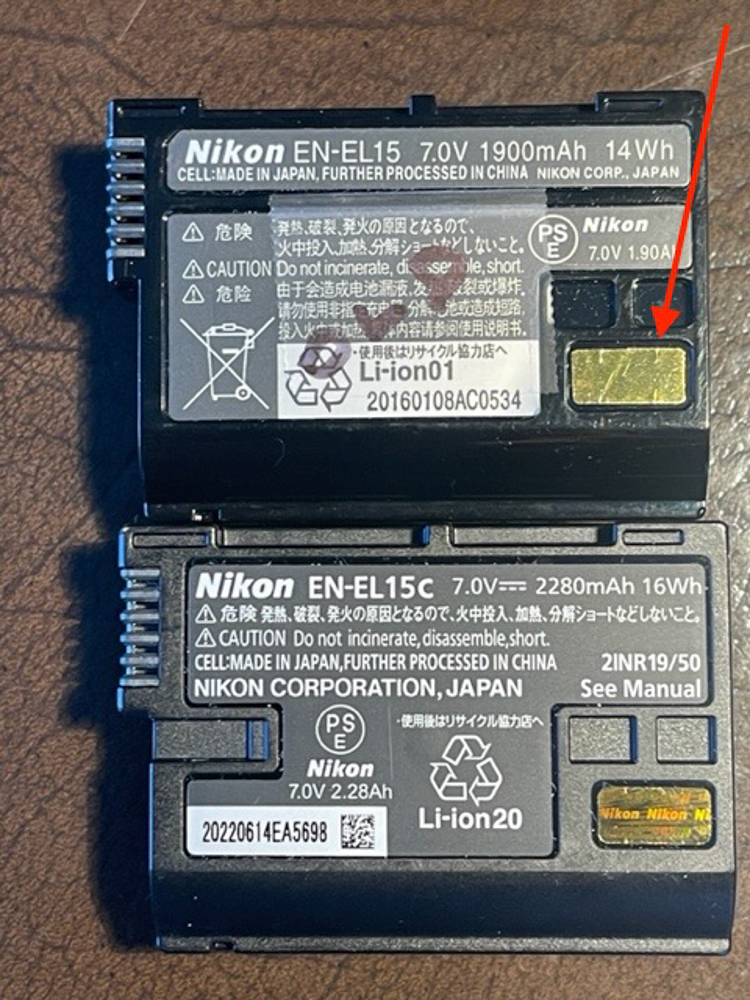
One of the four notches on the holographic label is arrowed.
Both of these batteries have all four notches.
There are many <$30 Nikon batteries on eBay which never seem to come with a Nikon box which, when included, should also carry a holographic circular label.
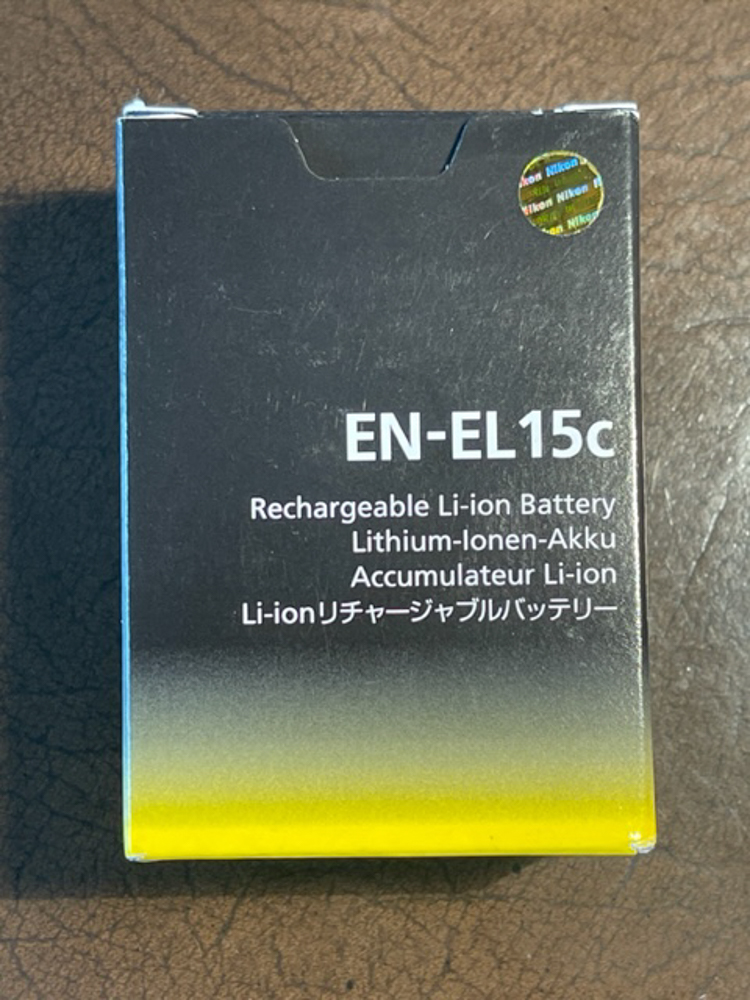
OEM box. The holographic circular label is at top right.
The broader issue is why waste money on a non-OEM battery which can swell and jam in the camera or, in extreme cases, catch fire when being recharged? The camera costs many times the premium for the OEM battery. And good luck with the home fire claim with your friendly insurance company. My brand new OEM EN-EL15c cost $70 from a factory authorized vendor, has the holographic label notches, does not sound hollow when tapped, resets the camera’s shot counter to ‘0’ after a full recharge, gets a solid glowing LED on the MH-25 charger when full charged and does not lose charge even after many days of non use in the camera. And yes, there’s a stamped ‘c’ near the ‘+’ embossing:
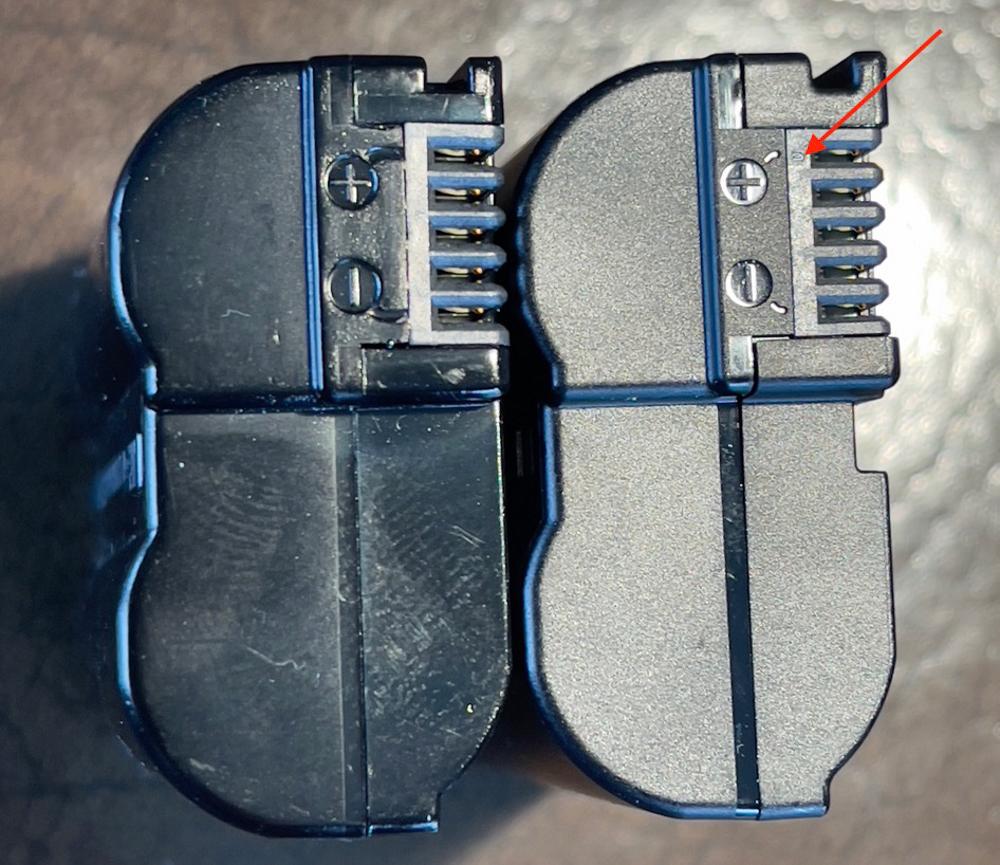
Arrow indicates the stamped ‘c’ on my OEM EN-EL15c battery.
Apply all of the eight indicators above when examining your battery and you will almost certainly know if it is OEM or a fake. (For original EN-EL15 batteries, disregards the seventh indicator in the bulleted list above).
As for private label aftermarket batteries, it’s a crapshoot. As Mr. Eastwood once put it “Do you feel lucky?”.

